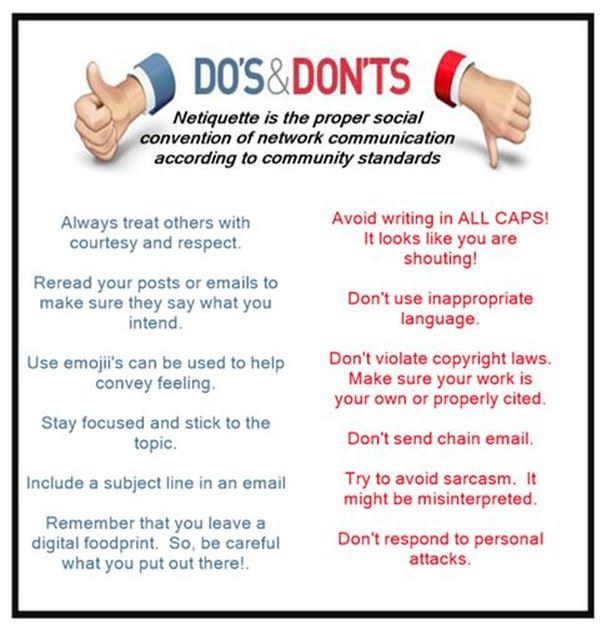

Here are some examples of different digital media and individual selected rules of conduct. Moreover, a distinction can also be made between company communication (B2B, B2C) and private dialogues, where similar behavioral rules are used, which may be supplemented by company internal and corporate guidelines. There are a variety of behavioral rules on the Internet. Each netiquette is dependent on the digital medium, the respective website operator or service provider and may contain specific rules.


To describe different netiquettes, it is useful to first distinguish between two types of communication. The netiquette is often derived from the first type of communication and then applies with small changes for publicly visible discussions and dialogues. This document is also the blue print for many other netiquettes of website operators and providers of information services. Regular users gradually suggested individual rules, which resulted from examples in which the communication or the handling of the medium did not proceed as intended. The Netiquette Guidelines RFC 1855, which were published in 1995, are the generally accepted standard on the Internet. Similar to non-digital communication, these rules developed over time. The first version of a netiquette is attributed to the Usenet. Netiquette is based on the idea that certain ethical rules of behavior promote the way communication is conducted in a positive sense and make the interaction more pleasant. If the participants of a communication medium commit themselves to certain behavioral rules, a pleasant handling of the medium and a respectful coexistence are ensured. Depending on the medium, conventions and rules are therefore proposed so that the participants can understand and relate to the statements and opinions of the respective other party. This is to avoid rudeness, insults, and technical problems, as well as incorrect handling of the medium. Over the course of time, general rules and recommendations have become prevalent, which are described with terms such as courtesy, rules of conduct, or etiquette. There is a social moral consensus about these rules of behavior, even if individual aspects and details are controversial. The Internet as a collection of digital communication forms is characterized by the fact that two or more participants in communication do not have the context information such as location or time as well as the various signals of the speakers such as mimic and gestures, as would be the case in normal communication situations. But such information is relevant in order to understand and correctly classify statements. 3 Practical relevance reference and legal issues.


 0 kommentar(er)
0 kommentar(er)
